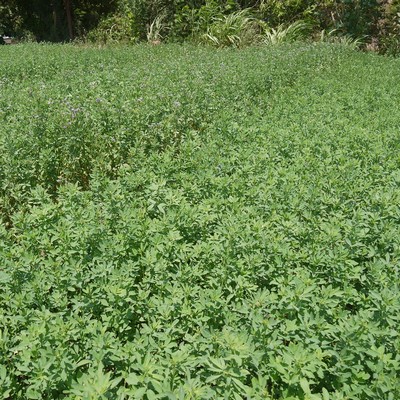Lucerne, also known as alfalfa, is a perennial legume that is grown for its forage and hay. The history of lucerne farming dates back to ancient times. It is believed that lucerne was first domesticated in Central Asia, and it was later introduced to other parts of the world, including Europe, Africa, and Asia.
Lucerne farming became more widespread in the Middle Ages, and it was an important crop during the Crusades. Lucerne was also introduced to the Americas by European settlers in the 16th century.
Lucerne farming has continued to grow in importance in recent years. It is a valuable crop for a number of reasons, including its high nutritional value, its ability to improve soil quality, and its drought tolerance. It is a major source of forage for livestock, and it is also used to produce hay, silage, and protein supplements.
Maturity Duration: The maturity duration of lucerne varies depending on the variety and the growing conditions. Generally, lucerne takes about 12-18 months to mature.
Expected Yield: The expected yield of lucerne also varies depending on the variety and the growing conditions. Generally, lucerne yields about 2-3 tons of dry matter per acre per year.
Growing Season: Lucerne can be grown in a variety of climates, but it does best in temperate regions. The best time to plant lucerne is in the spring, after the last frost.
Nutritional Value: Lucerne is a good source of protein, fiber, and vitamins A and C. It is also a good source of minerals, including calcium, phosphorus, and iron.
Growing Altitude: Lucerne can be grown at a variety of altitudes, but it does best at elevations of 1,000-2,000 feet.
Growing Rainfall: Lucerne needs about 20-30 inches of rainfall per year. It can tolerate some drought, but it will not produce well if it is too dry.
Growing Temperature: Lucerne grows best in temperatures of 60-80 degrees Fahrenheit. It can tolerate some cold, but it will not produce well if it is too cold.
Growing Soils and PH: Lucerne can be grown in a variety of soils, but it does best in well-drained, fertile soils with a pH of 6.0-7.0.





